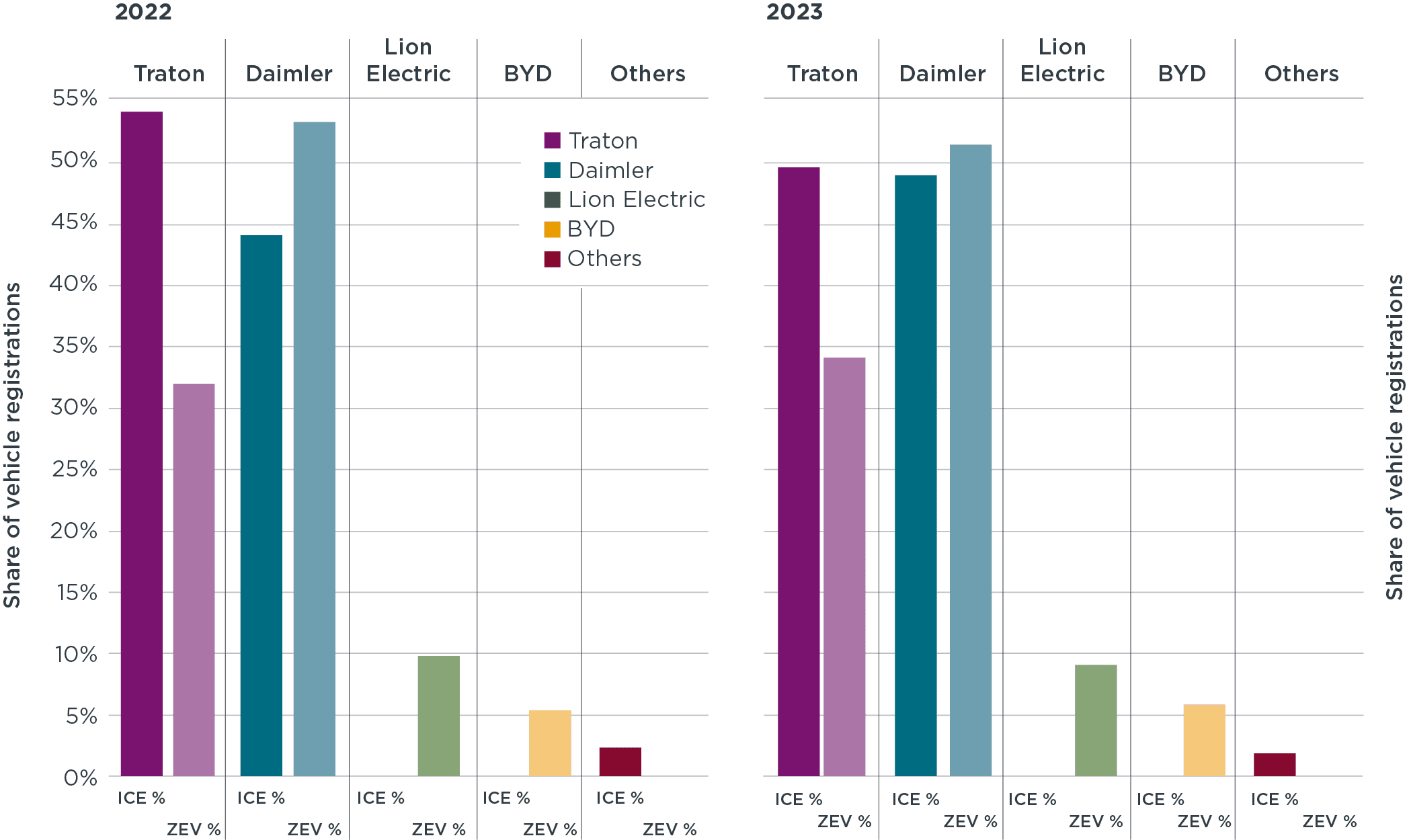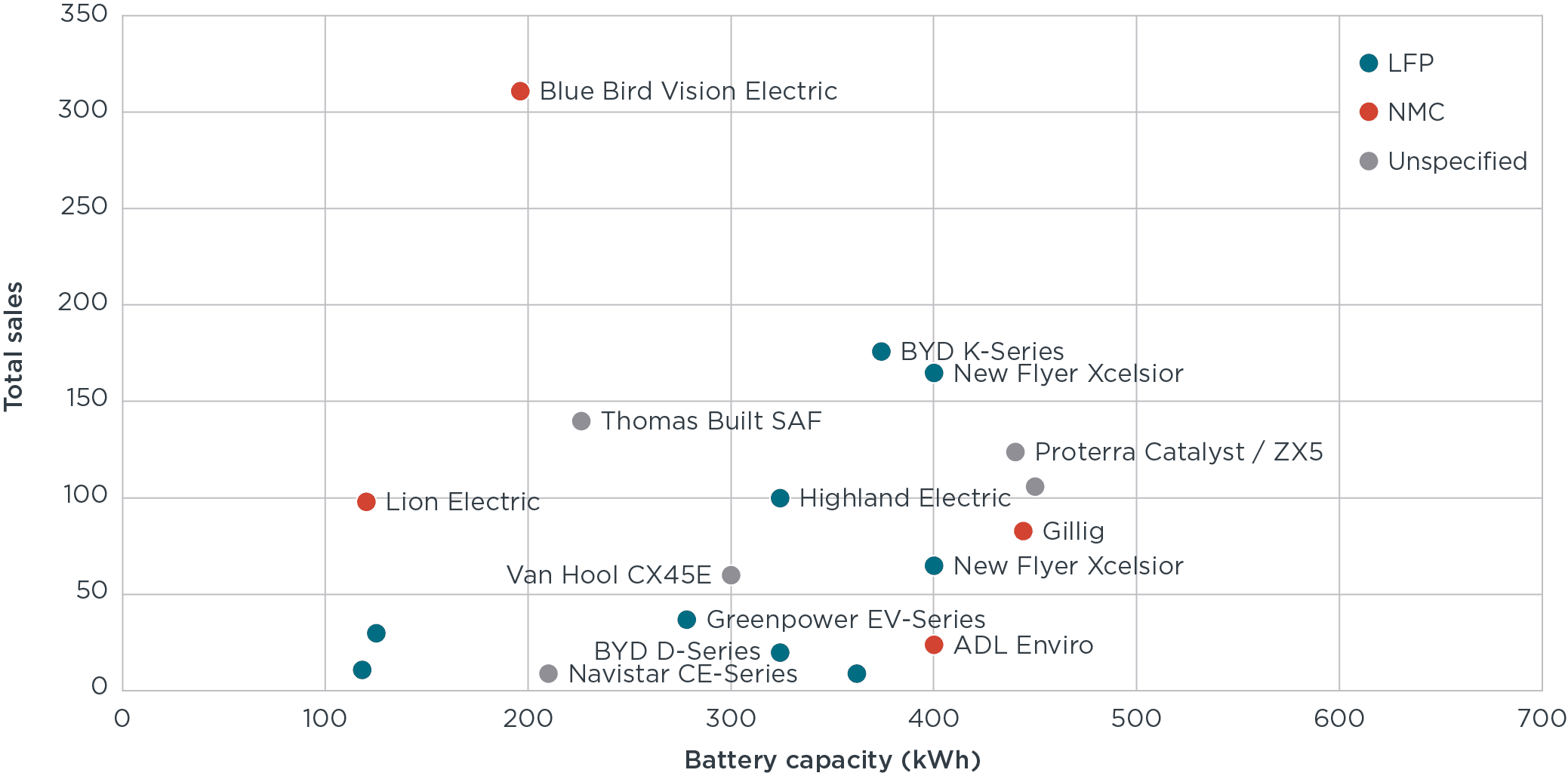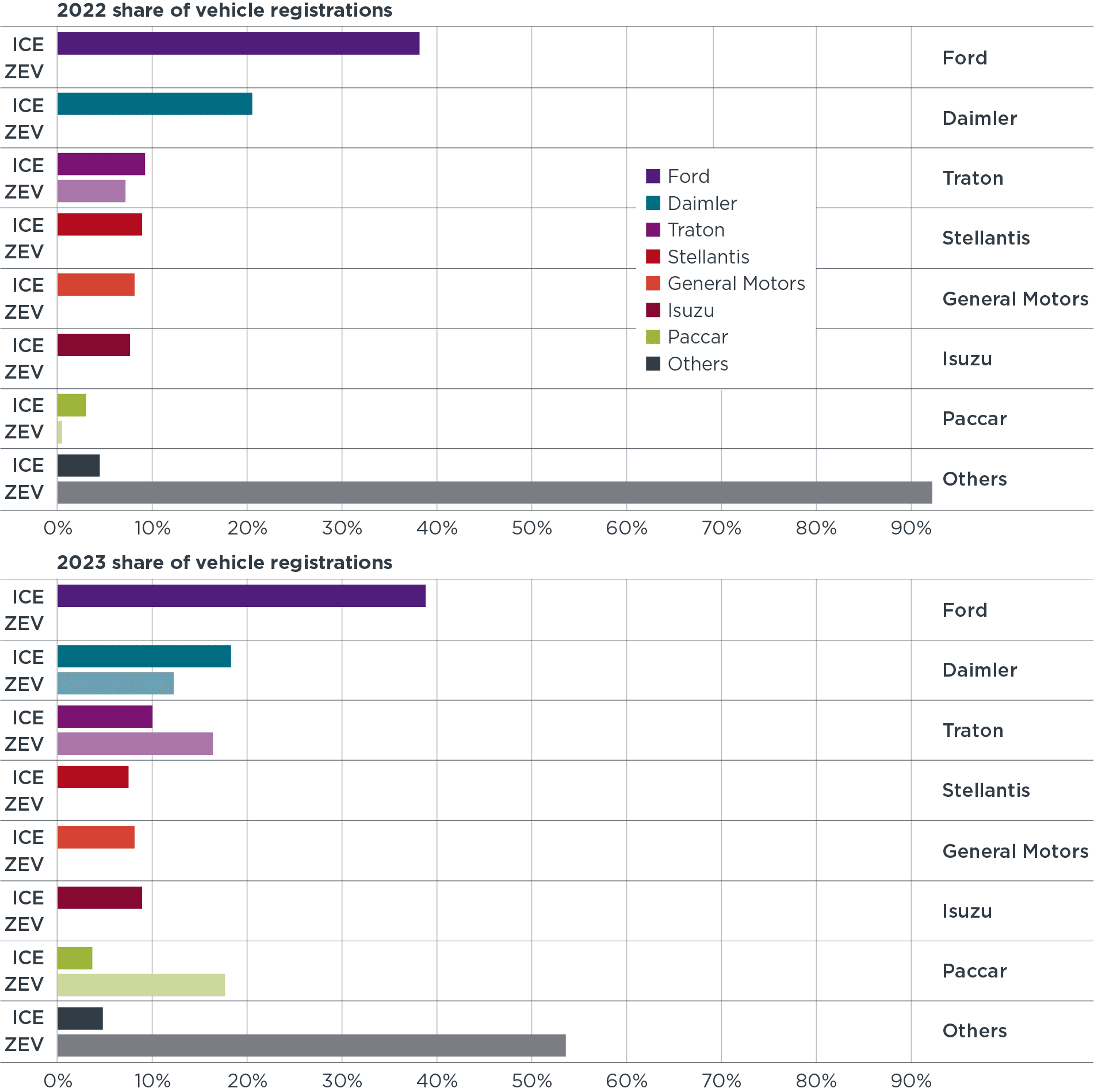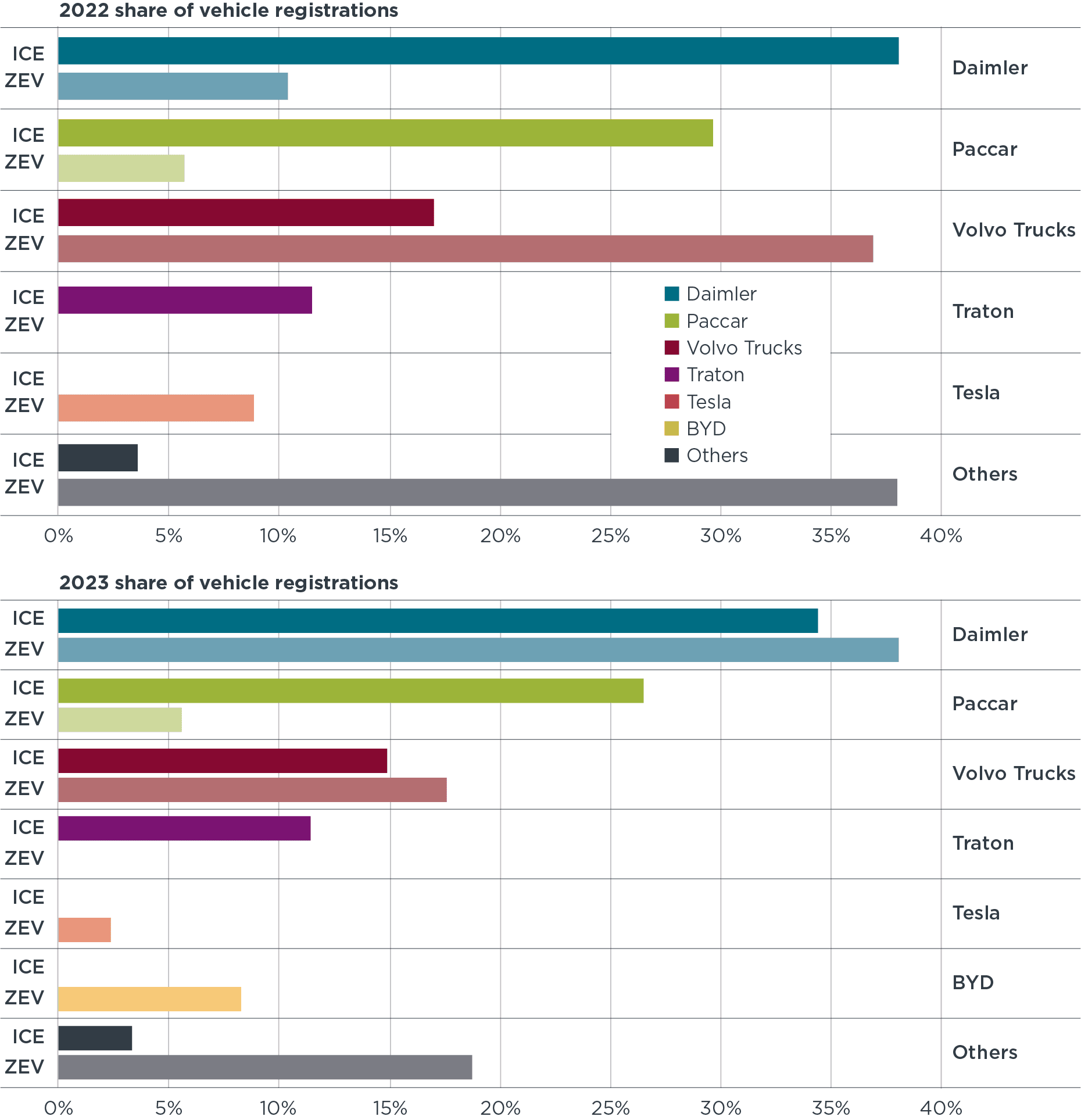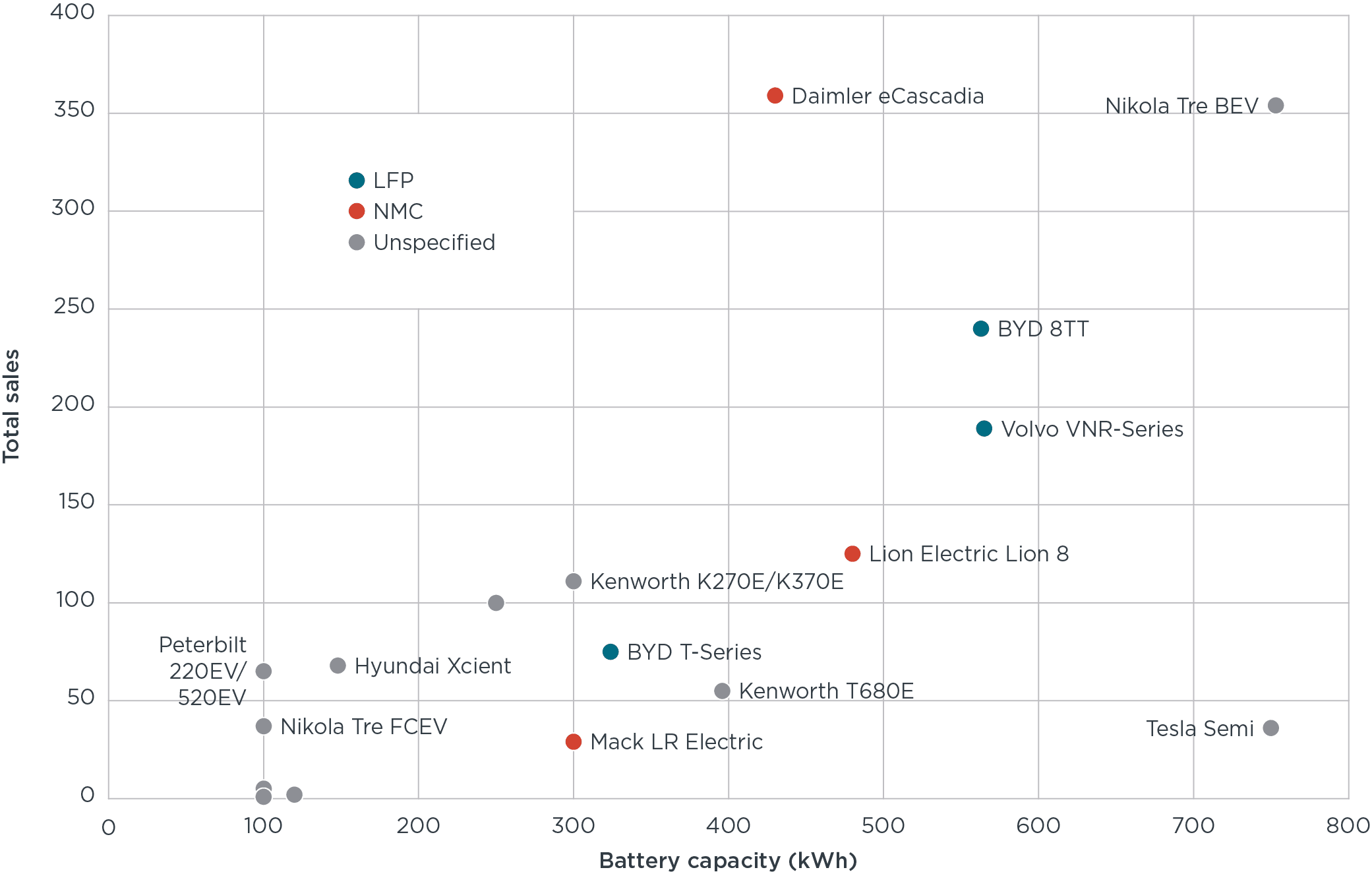Zero-emission bus and truck market in the United States and Canada: A 2021 update
Market Spotlight
Zero-emission bus and truck market in the United States: A 2022–2023 update
Overview
Figure 1. Number and share of zero-emission heavy-duty vehicle registrations in the United States by vehicle type
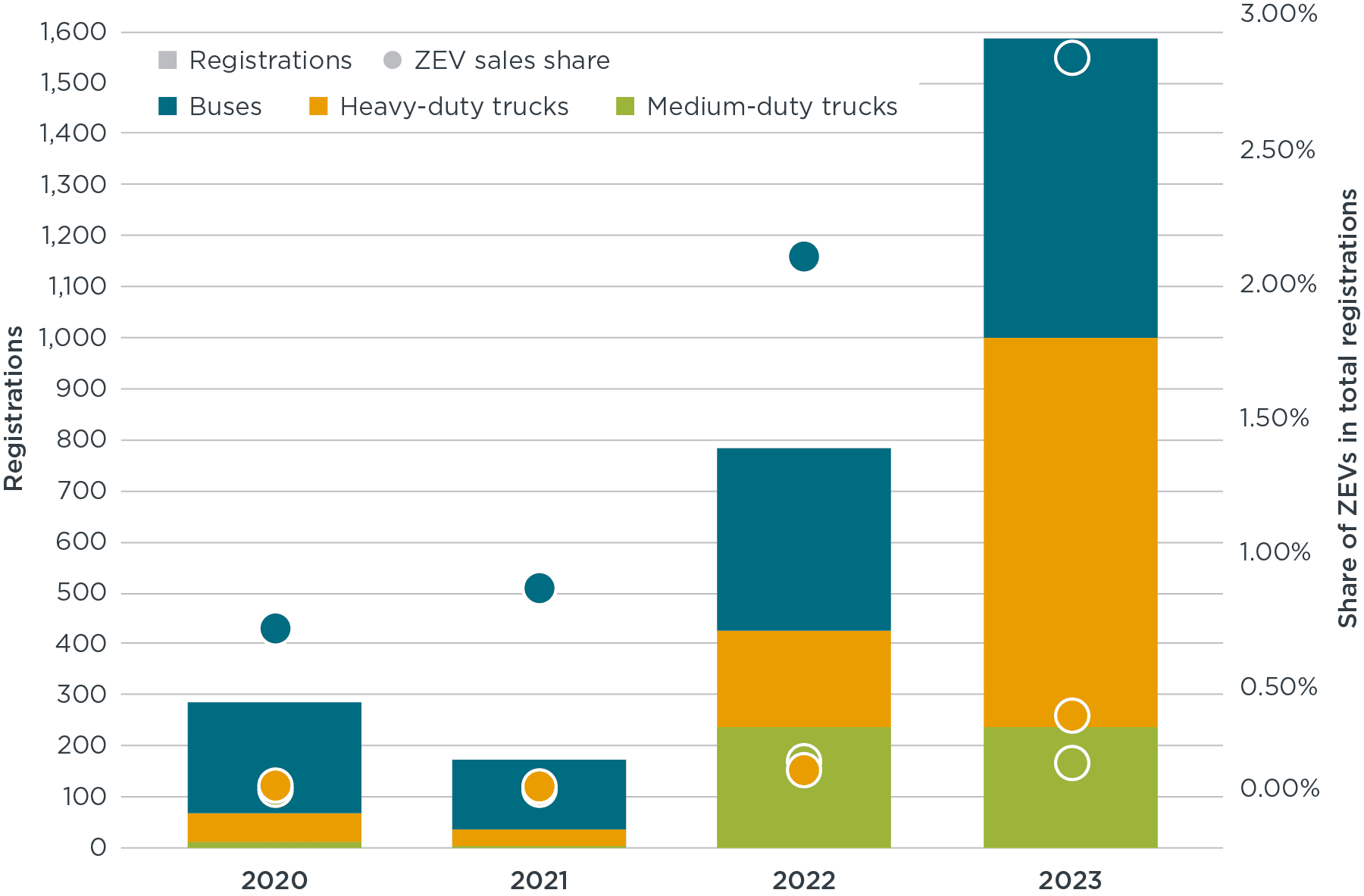
Figure 2. New heavy-duty vehicle registrations in the United States by vehicle type and powertrain

Buses
Registrations of zero-emission buses grew from around 140 in 2021 to 360 in 2022, and then to around 590 in 2023. In 2023, zero-emission buses were 2.8% of all new bus registrations in the United States—the highest market penetration among HDV segments.
The two largest manufacturer groups of ICE-powered buses in the United States are Traton and Daimler, and these two groups are also becoming dominant players in the zero-emission bus market. Traton subsidiary Navistar manufactures battery electric school buses under the IC Bus brand and Daimler subsidiary Thomas Built manufactures battery electric Saf-T-Liner C2 Jouley school buses. Registrations of electric school buses have propelled Traton and Daimler past all-electric bus manufacturers Lion Electric and BYD, which took third and fourth place, respectively, in the U.S. zero-emission bus market in both 2022 and 2023.
The two largest manufacturer groups of ICE-powered buses in the United States are Traton and Daimler, and these two groups are also becoming dominant players in the zero-emission bus market. Traton subsidiary Navistar manufactures battery electric school buses under the IC Bus brand and Daimler subsidiary Thomas Built manufactures battery electric Saf-T-Liner C2 Jouley school buses. Registrations of electric school buses have propelled Traton and Daimler past all-electric bus manufacturers Lion Electric and BYD, which took third and fourth place, respectively, in the U.S. zero-emission bus market in both 2022 and 2023.
Figure 3. Internal combustion engine and zero-emission bus registration shares in the United States by manufacturer group
Trucks
From 2021 to 2022, new zero-emission heavy-duty truck registrations grew from 33 to 190, and new zero-emission medium-duty truck registrations surged from the single digits to 240. From 2022 to 2023, zero-emission heavy-duty truck registrations quadrupled to 760 and zero-emission medium-duty truck registrations remained about the same as in 2022. As a result of the recent market growth, zero-emission heavy-duty trucks were 0.28% all new heavy-duty truck registrations and zero-emission medium-duty trucks were 0.10% of all new medium-duty truck registrations in 2023.
Figure 5. New medium- and heavy-duty truck registrations in the United States by vehicle class and powertrain
Figure 6. Internal combustion engine and zero-emission medium-duty truck registration shares in the United States by manufacturer group
Different manufacturers chose to use LFP and NMC batteries in their vehicles, with capacity ranging from under 100 kWh to 175 kWh.
Figure 7. Sales of zero-emission medium-duty trucks in the United States by model in 2022 and 2023 (combined) and by battery capacity
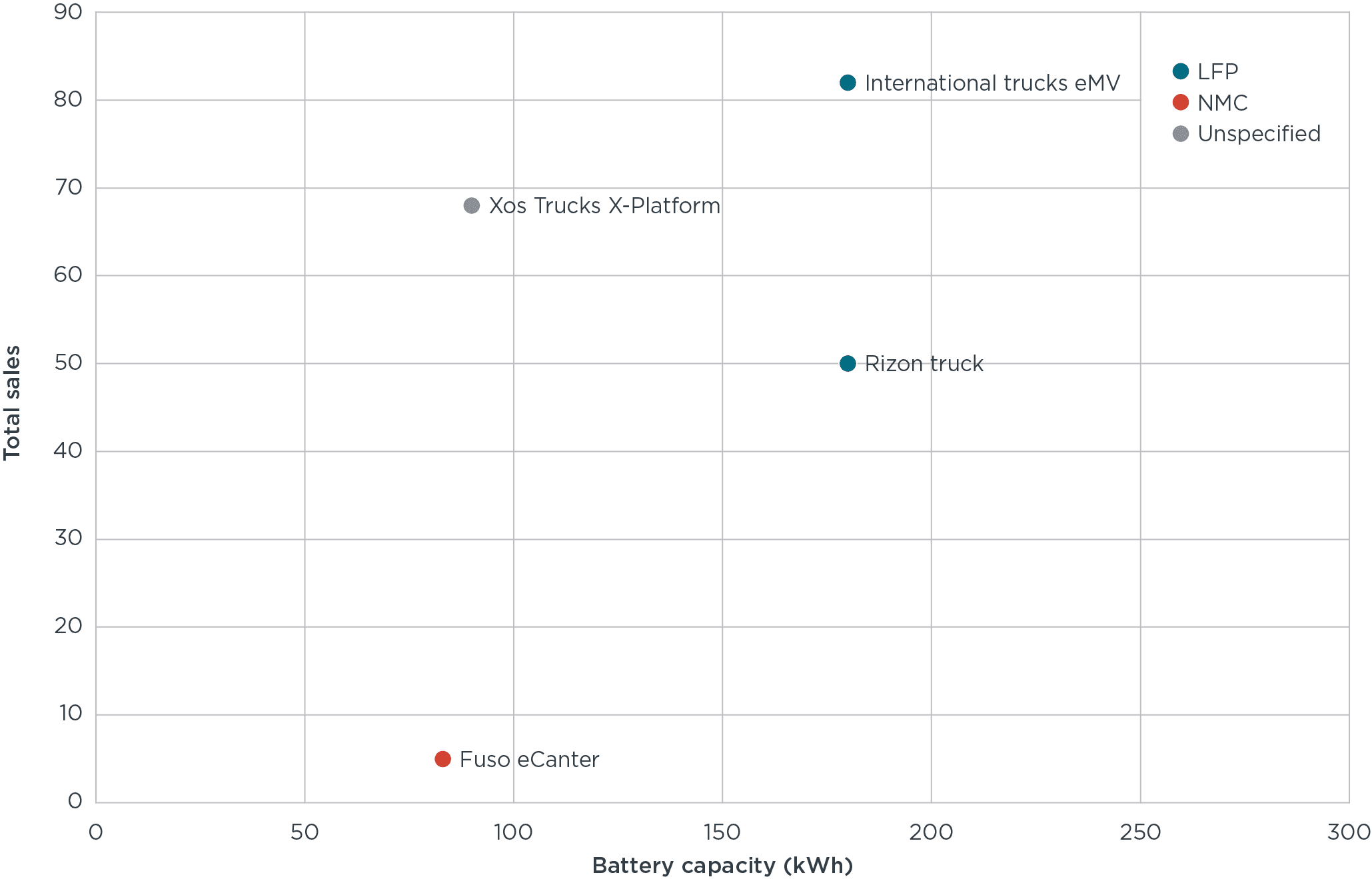
Definitions and data sources
Definitions
Zero-emission vehicles: Any vehicle with a propulsion system that produces zero combustion emissions, such as a dedicated battery electric, fuel cell electric, or other motor that is not driven by combustion.
Heavy-duty vehicles: All vehicles with a gross vehicle weight rating above 14,001 lb, which correspond to Classes 4–8 in the National Highway Administration’s vehicle class definition.
Buses: All Class 4–8 buses and coaches.
Heavy-duty trucks: Class 8 trucks with a gross vehicle weight rating greater than 33,000 lb.
Medium-duty trucks and vans: Class 4–7 trucks and vans with a gross vehicle weight rating of 14,001–33,000 lb.
|
Class of truck |
Gross vehicle weight rating (lb) |
Gross vehicle weight rating (kg) |
Classification in this Market Spotlight |
|
4 |
14,001–16,000 |
6,350–7,257 |
Medium-duty trucks |
|
5 |
16,001–19,500 |
7,258–8,845 |
|
|
6 |
19,501–26,000 |
8,846–11,793 |
|
|
7 |
26,001–33,000 |
11,794–14,968 |
|
|
8 |
33,001+ |
14,968+ |
Heavy-duty trucks |
Data sources
All zero-emission vehicle sales data and battery capacity data were sourced from EV-Volumes, https://ev-volumes.com/. Vehicle registration data were supplied by S&P Global Limited; Copyright © S&P Global Limited 2024. All rights reserved.
Individual vehicle model information was retrieved from the following:
- Nikola Corporation, “Nikola Corporation Reports Fourth Quarter and Full Year 2023 Results,” https://nikolamotor.com/nikola-corporation-reports-fourth-quarter-and-full-year-2023-resultsi
- Jessica DiNapoli, “Tesla Semi Trucks in Short Supply for PepsiCo as Its Rivals Use Competing EV Big Rigs,” Reuters, April 19, 2024, https://www.reuters.com/business/autos-transportation/tesla-semi-trucks-short-supply-pepsico-its-rivals-use-competing-ev-big-rigs-2024-04-19/
- Navistar, “The Next Generation IC Bus® CE Series Bus,” https://www.icbus.com/buses/school/ceseries#;
- Thomas Built Buses, “Saf-T-Liner® C2 Jouley® Electric School Bus,” https://thomasbuiltbuses.com/school-buses/saf-t-liner-c2-jouley/

